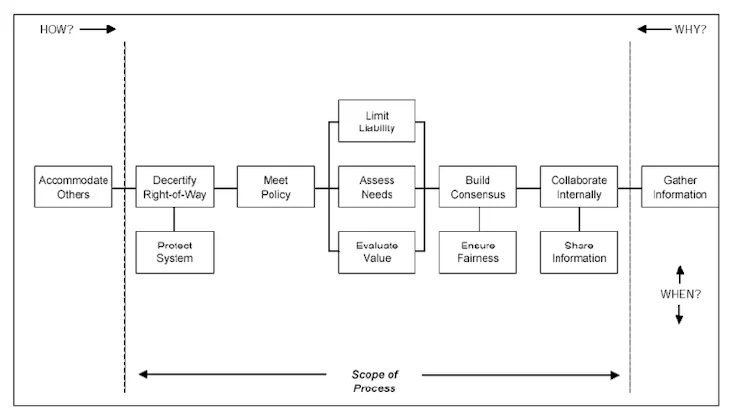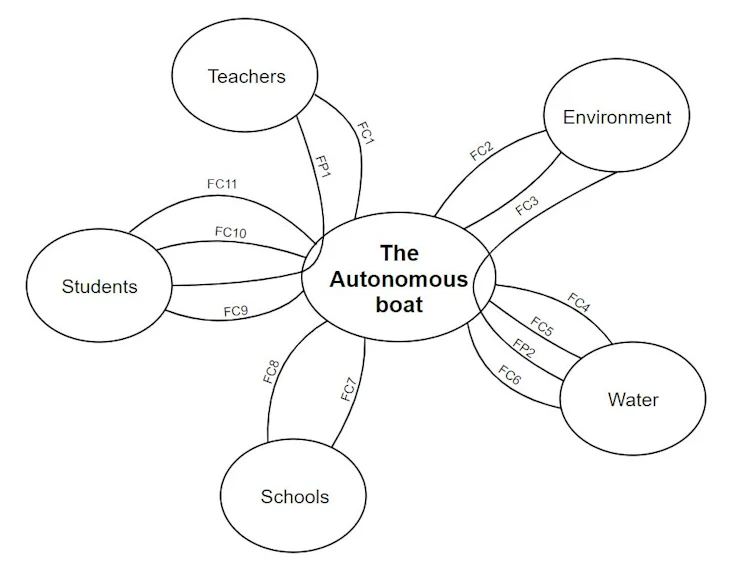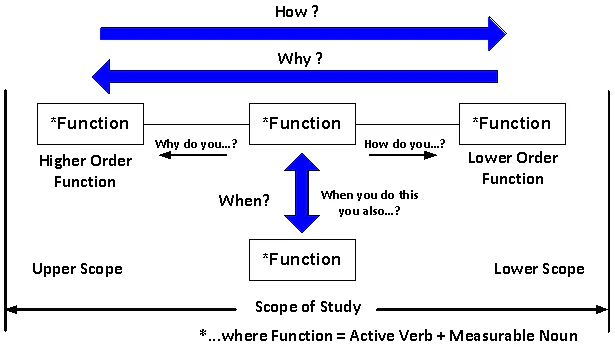Value Engineering Fast Diagram Template
There are so many tools to organize your projects. Today, in the family of organization and visualization tools, we ask the FAST diagram to join us!
If you want to detail the development of your product from all angles, in a collaborative, exhaustive and 100% functional way, you've come to the right place! Today we study the role and importance of this matrix. We give you a quick definition, illustrated examples, issues and diagram template here ⤵️
What is a FAST diagram?
Definition
The FAST diagram, whose initials stand for Function Analysis System Technique, is a diagram:
- constructed from left to right,
- which represents the logical relationships between different functions,
- to answer the questions how and why.
In this simplified example:
- How to inform the reader? → By publishing articles on the web. How? → By using a platform like Wordpress.
- Why should you use Wordpress? → To publish articles on the web. Why? → To inform the reader.
Functional analysis
This is one of the deliverables and means used in functional analysis, which aims to determine the architecture of a system, both in industry and in IT. Other deliverables include:
- the functional specifications,
- the octopus diagram,
- the functional specifications,
- energy and information chains.
FAST diagram examples
The first example of a possible FAST diagram
 © ResearchGate
© ResearchGate The second example of a possible washing machine FAST diagram.
| How -> | <- Why | |
| Stirring the laundry | Rotating the drum | Managing the speed and direction of rotation |
| Converting electrical energy into mechanical rotation energy | ||
| Adapting energy | ||
| Distributing energy |
☝️ You should not confuse the FAST diagram with the APTE diagram. The APTE diagram is used to represent all constrained functions around the main function:
 @ Remy Ducros
@ Remy Ducros
Why use the FAST method?
The FAST model starts from the expressed needs and illustrates how to answer them as objectively and exhaustively as possible.
In the context of value-based management, for example for the development or improvement of a product, a process or a project, it enables engineers to translate services into technical functions, thanks to a good knowledge of the product.
In short, the FAST diagram encourages a creative and collaborative thinking process by allowing to:
- clearly establish the basis of the project and consider it in its entirety from the designing phase,
- develop a common understanding of the product within the project team,
- take into account all the ins and outs of each development,
- determine the scope of the project, the extent of the tasks to complete it and their interdependence, if any (top-down).
How to build a FAST diagram?
Steps to build it collaboratively
- 1 - Do a functional analysis first
How to make a good functional analysis? ✅
- List all the functions of a product, for example, for a washing machine: wash clothes, rinse clothes, spin clothes,
- Detail these functions, prioritize them and value them (high or low importance),
- Identify the main functions (removing stains), the secondary functions (softening the laundry) and the constrained functions (not damaging the laundry),
- 2 - For each function identified:
- You should ask yourself "How is this function accomplished?" and write the answer to the right, in the form of an active verb and a noun designating something measurable,
- And then, you should wonder "Why develop this function?" and write the answer on the left,
- 3 - For each logic problem in the scenario, identify missing or redundant functions or adjust the order of functions.
- 4 - Identify those that occur simultaneously or depend on each other, by asking "when this function is performed, does another function trigger? Or does it depend on the triggering of another function?" and write the answer below.
There are different methods of using and building an efficient FAST diagram. Some can mention basic function, cost and other components.
A FAST diagram can take many forms, like a tree or even regular lines. The objective is to support the project and to meet future customers expectations or the values expected by clients.
It is up to you to choose what will the content of your FAST diagram describe!
How to read a FAST diagram?
We give you a pictured example.
 © Value Analysis Canada
© Value Analysis Canada - the main functions, of a higher level, are on the left: they represent why, the need,
- the technical functions and sub-functions are on their right, of a lower level, they represent the "how to accomplish the main functions, to achieve the desired result",
- those that have a link are on top of each other, they represent the interdependencies and simultaneity, the when, which is therefore not temporal.
Summary and template to download
Here is a FAST diagram to fill in, in Word format, starting from a preconceived and blank template. For this, there are no arrows, you have to indicate them at the appropriate places.
Be fast with a FAST diagram
Every project and every diagram are different, so we recommend that you use software that allows you to make a custom FAST diagram online, like a project management or BPM tool to design your diagrams or mind maps more effectively.
What about you, do you use online software to make your FAST diagram faster?
Transparency is an essential value for Appvizer. As a media, we strive to provide readers with useful quality content while allowing Appvizer to earn revenue from this content. Thus, we invite you to discover our compensation system. Learn more
Posted by: antonyantonykoudelkae0272469.blogspot.com
Source: https://www.appvizer.com/magazine/operations/project-management/fast-diagram
Post a Comment for "Value Engineering Fast Diagram Template"